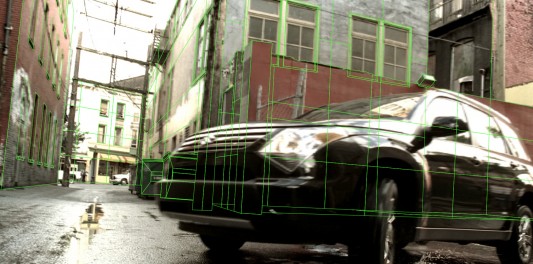A variety of GPU-accelerated modes are now at the compositer’s fingertips.
 The Foundry has released an update of its popular video compositor Nuke that focuses on increased speed through better integration with all available hardware resources. There are also changes to workflow and support for new file formats.
The Foundry has released an update of its popular video compositor Nuke that focuses on increased speed through better integration with all available hardware resources. There are also changes to workflow and support for new file formats.
The most fundamental way Nuke increases integration with existing hardware is with new RAM cache technology to allow real-time playback while editing video. Also debuting in this release are a variety of GPU accelerated nodes for NukeX including MotionBlur, Kronos, Denoise, VectorGenerator, Convolve and ZDefocus. The Foundry describes this as “a fundamental change” that will allow users to utilize the power of their GPUs to speed up interactive image processing times. When the GPU is available NukeX will take full advantage of that power. If no GPU is available, the software simply reverts back to the CPU without any need to adjust settings.

Users are now able to perform lighting tasks in a comp using the ReLight node and even model using NukeX’s new ModelBuilder. Both of these additions reduce the need for artists to jump in and out of other programs or hand work off to other departments.
The roto tools in Nuke have been entirely redefined to enhance performance and improve stereo support, giving artists additional control. Support for new camera raw formats have been added including Alexa ARRIRAW and the latest R3D SDK. Nuke 7.0 includes Primatte 5 and a brand new 2D tracker with updates to the workflow and speed. The SplineWarp node and Dope Sheet have also benefited from improvements.
NukeX features the core Nuke toolset complimented with a range of exclusive features include GPU accelerated nodes, 3D camera tracker, modeling and point cloud generation and the FURNACECORE plug-in set.
Robert Nederhorst is the VFX Supervisor at Svengali Visual Effects; he spent time with the pre-release version of Nuke 7: “[Nuke 7 is so] chocked so full of goodness you want to have it sold at a donut shop.”






